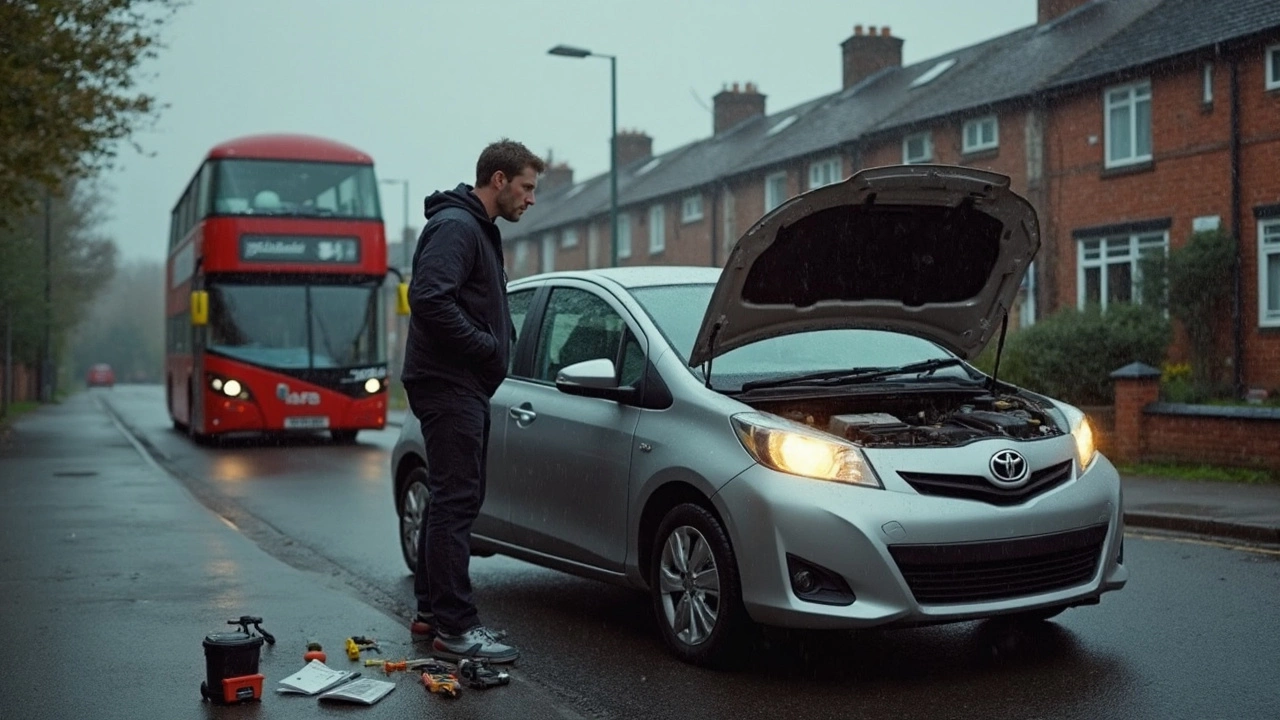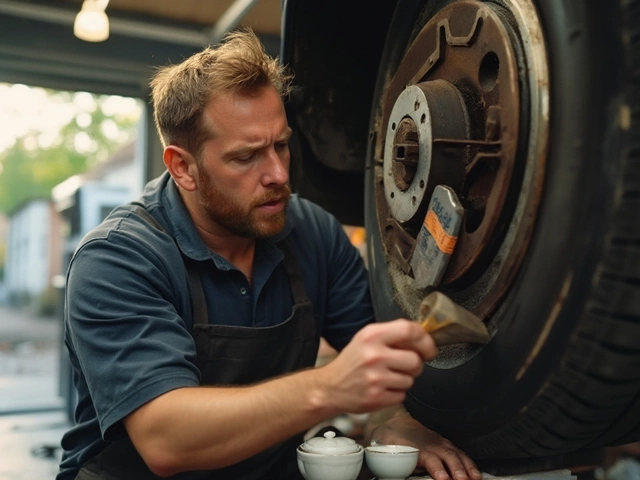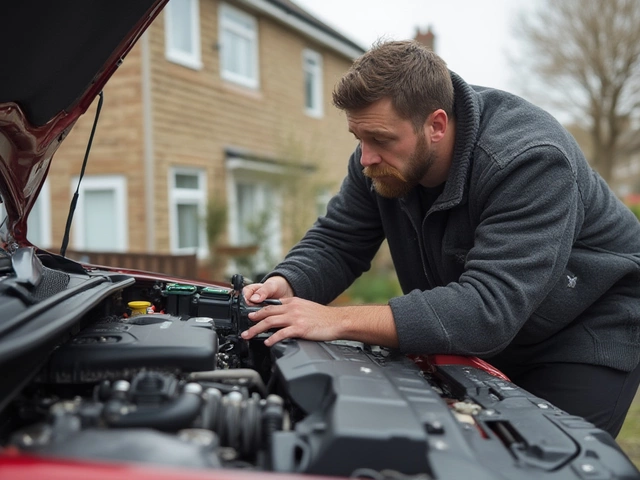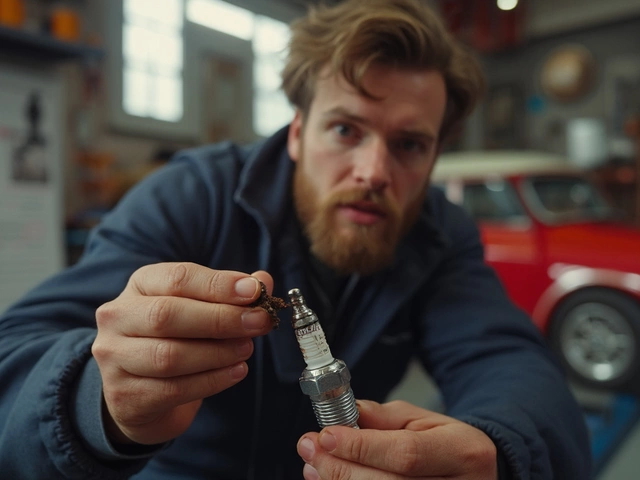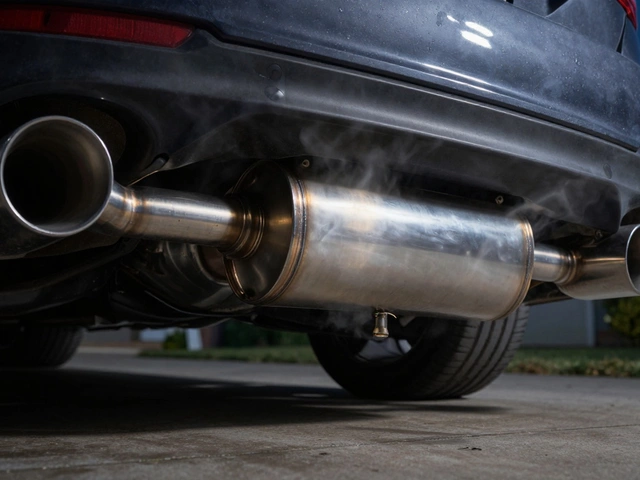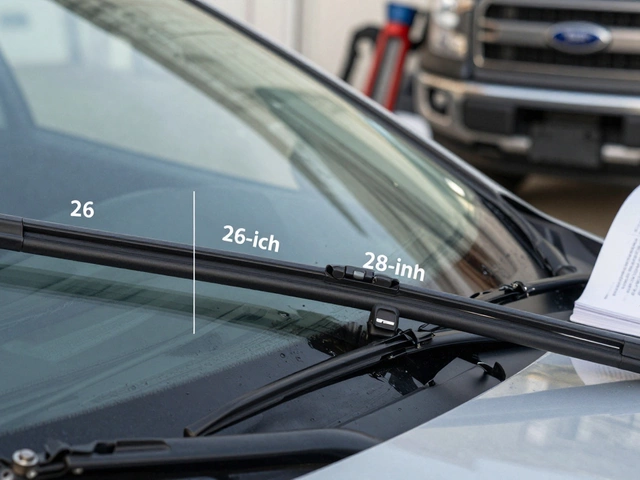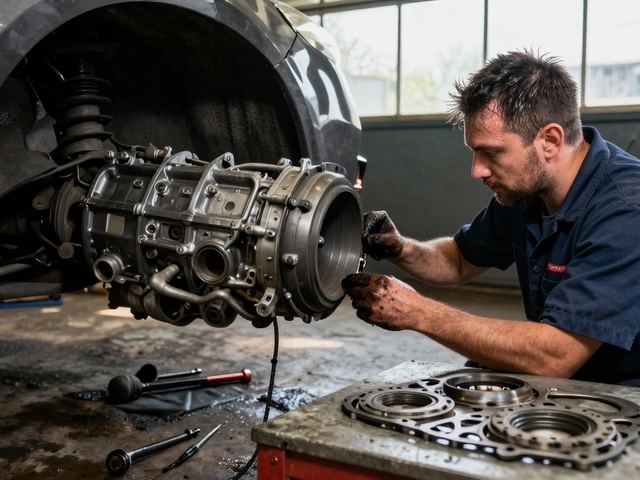If your car stutters, loses power on hills, or totally dies on you, the fuel pump might be crying for help. That little pump has one job—moving fuel from tank to engine—but when it goes bad, almost everything feels wrong with your ride.
So what can actually help when your fuel pump’s on its last legs? There are a few hacks and tricks that might buy you a little more time, but don’t expect miracles. It's not about fixing it forever—it's about squeezing out those extra miles to get where you need to go. You’d be surprised at how many drivers end up stranded from overlooking the telltale signs, only to learn there were warning noises and jerky starts weeks before disaster hit.
Before you think about dropping big money on a replacement, it helps to know what’s possible at home—and what’s just wishful thinking. Let’s cut through the nonsense. I’ve seen even a nearly dead pump limp a car to the shop with a couple of clever tricks. Ready for tips that actually work and aren’t just “internet magic”? Keep reading—you’ll know how to spot a dying pump, what’s worth trying, and how to buy some time without making things worse.
- Spotting the Signs of a Failing Fuel Pump
- Quick Fixes When You're Stuck
- Things That Actually Help (and What Doesn't)
- How to Prevent Fuel Pump Problems
Spotting the Signs of a Failing Fuel Pump
If you catch the early signs of a fuel pump going bad, you can avoid getting stuck in some parking lot or on the side of the road. Most pumps don’t just die out of nowhere—they’ll give you plenty of hints if you’re paying attention.
- Weird noises from the gas tank: If you hear a whining or buzzing sound after you turn the key, right by your gas tank, that’s a classic red flag. A healthy pump is almost silent.
- Engine sputtering under load: If your engine coughs or sputters when you try to speed up or drive uphill, the pump could be starving your engine for fuel.
- Car struggles to start: Slow, cranky starts (especially first thing in the morning), can point to low pressure in the fuel system.
- Surging or jerking: Ever feel your car randomly lurch forward or lose power, all in the same drive? That’s your fuel pump working on and off.
- Sudden stalling: If your car randomly cuts out while driving, then magically restarts after a break, that’s another big one.
- Poor fuel economy: A bad pump makes your engine work harder, so you’ll notice more trips to the gas station. Not fun for your wallet.
These issues can show up at different times and with different severity, but most folks deal with at least two or three at the same time before the pump finally gives out.
Here’s a quick table with some typical symptoms and how often drivers notice them before the pump actually fails for good:
| Sign | % of Cases Noted by Drivers | Time Before Full Failure (Average) |
|---|---|---|
| Whining/buzzing noise at start | 60% | 1-2 weeks |
| Sputtering engine under load | 70% | 4-8 days |
| Slow or rough starting | 50% | 2-4 weeks |
| Random surging/jerking | 65% | 1-3 weeks |
| Stalling then restarting | 35% | Hours–few days |
Don’t wait for every warning sign to stack up. One or two of these problems is enough reason to check out your fuel pump before you find yourself stuck calling a tow truck.
Quick Fixes When You're Stuck
Your car’s acting up and you’re pretty sure it’s the fuel pump. You’re not alone—this catches a lot of people off guard. When you’re stranded or just trying to get somewhere before you deal with a real fix, here are things that actually make a difference.
- Check for overheating: Sometimes the pump just gets too hot, especially after long drives. Letting your car sit for 30 minutes to cool down can sometimes buy you enough time to crank it up again and limp home or to a shop.
- Tapping on the fuel tank: This old trick really works in some cases. The pump sits inside or on top of the tank, so a few firm taps (use a rubber mallet or even your shoe heel) can jar a sticking component. It’s not a fix, but it might get the pump running for another start or two.
- Keep the fuel level up: When fuel pumps are worn out, running low on gas makes it even harder for them to do their job. If you suspect trouble, try to keep your tank at least half full. This helps the pump stay cool and lowers the strain needed to pick up fuel.
- Check your fuses and relays: Sometimes what looks like a dead pump is actually a blown fuse or bad relay. Pop open your fuse box and look for ‘Fuel Pump Relay’ and its fuse. Swapping with a known good one can sometimes save the day.
- Listen for the pump: With the key turned to the "on" position (not started), listen near the back seat or fuel tank for a short humming sound. No sound might mean the pump’s dead, but a sluggish noise at least tells you it's trying. Knowing this can help narrow down if you’re dealing with a pump or something else, like a clogged filter.
If these don’t work, don’t keep cranking the engine—this could overheat the starter or totally flood your system. Sometimes you just need to call a tow, but trying these steps can sometimes help you get out of a tough spot without making things worse.

Things That Actually Help (and What Doesn't)
Dealing with a bad fuel pump can get stressful quick. Some things people try are just myths, while others might actually buy you a little extra time. Here’s what really helps—and what’s a waste of your energy.
First, don’t bother with miracle fuel additives that claim to "fix" a bad pump. There’s zero proof they bring a dead pump back to life. They might clean up the fuel system, but once a pump’s got bad bearings, burned contacts, or failing internals, nothing in a bottle is going to repair it.
Now, what can you actually do that helps? Here’s the real stuff you can try:
- Keep the gas tank at least half full. This sounds basic, but a pump cools itself with the fuel in the tank. When you keep more fuel above the pump, you’re helping it run cooler, and sometimes it’ll limp along a little longer. Driving on empty overheats a weak pump and makes things worse fast.
- Tapping the fuel tank (gently!) sometimes jars a stuck pump just enough to restart it. I know it sounds like a bad joke, but lots of techs carry a rubber mallet just for this. If you’re stranded, have someone turn the key while you give the tank a couple of light knocks. No promises, but it’s worked as a last-ditch move for plenty of folks.
- Letting the car cool down. Overheating usually makes a failing pump shut off completely. If there’s no sound from the pump and the car won’t start, give it 30 minutes or so to cool off. Sometimes it’ll restart and let you go a couple more miles.
- Check your fuel filter. A clogged filter makes the pump work way harder. Swapping a dirty filter won’t heal a fried pump, but if it’s only struggling, a new filter takes some load off and can help prevent total failure. These are cheap and easy to change on most older cars.
And what definitely doesn’t help on a bad fuel pump?
- Disconnecting sensor wires. There’s no hidden "fuel pump hack" involving swapping wires under the dash or hood. Ignore any random YouTube tricks you see there.
- Adding injector cleaner. It won’t touch the inside of the pump or fix anything burned out.
- Filling up with high-octane gas. A fancier blend doesn’t make an old pump work harder or better—it’s about pressure, not fuel type.
The bottom line: small, smart moves might let a weak pump hang in until you reach a shop, but nothing replaces fixing or swapping out the fuel pump when it goes bad. If you start noticing trouble, make a plan to get it checked soon—a surprise failure is never fun, especially far from home.
How to Prevent Fuel Pump Problems
Fuel pumps don’t just fail out of nowhere—most of the time, it’s slow damage from stuff people never think about. But prevention is easier than people realize, and it can save you from a big repair bill.
First off, always keep your gas tank at least a quarter full. Running on fumes doesn’t just risk you being stranded. When your tank is low, the pump heats up more since the fuel actually helps cool it. Less fuel, more heat—more heat, more wear. Automakers actually recommend this tip in their manuals, but a lot of folks ignore it.
- Use quality fuel, and stay away from gas stations with questionable reputation. Water or grit in your fuel can wreck a pump fast.
- Change your fuel filter as part of your regular maintenance routine. A clogged filter makes the pump work a lot harder than it should, and many cars go 50,000+ miles before anyone thinks about it.
- If possible, avoid driving with a super low tank, especially in summer. Gas sloshing around at low levels stirs up junk that can clog the filter or kill the pump.
- Watch out for how your car starts and accelerates. If you notice slow starts, weak acceleration, or odd whining noises from the rear, don’t wait. Check those things out early so a small problem doesn’t become a big one.
To put things in perspective, look at how fuel pump life changes based on tank habits:
| Tank Level Habit | Average Fuel Pump Lifespan |
|---|---|
| Rarely below 1/2 tank | 100,000+ miles |
| Frequently below 1/4 tank | 60,000–80,000 miles |
| Often runs to empty | 40,000–50,000 miles |
Kind of wild, right? Simply keeping your tank fuller can boost the life of your fuel pump by tens of thousands of miles. On top of that, don’t ignore those service light warnings—sometimes the first sign the pump is struggling is a dash light you might shrug off.
Stay on top of maintenance, and drive smart. It’s not about babying your car—it’s about making sure you get every mile (and dollar) out of that pump.
